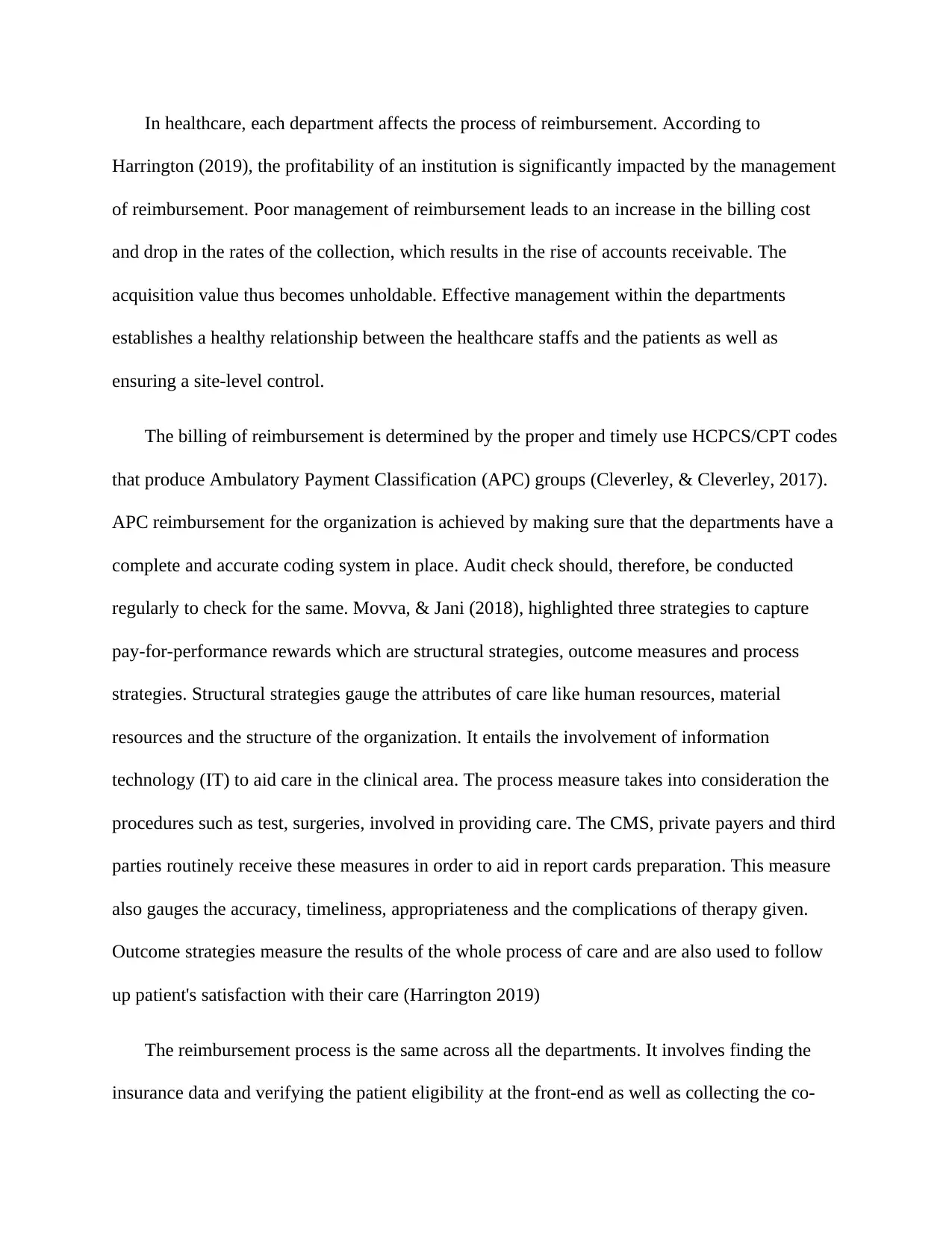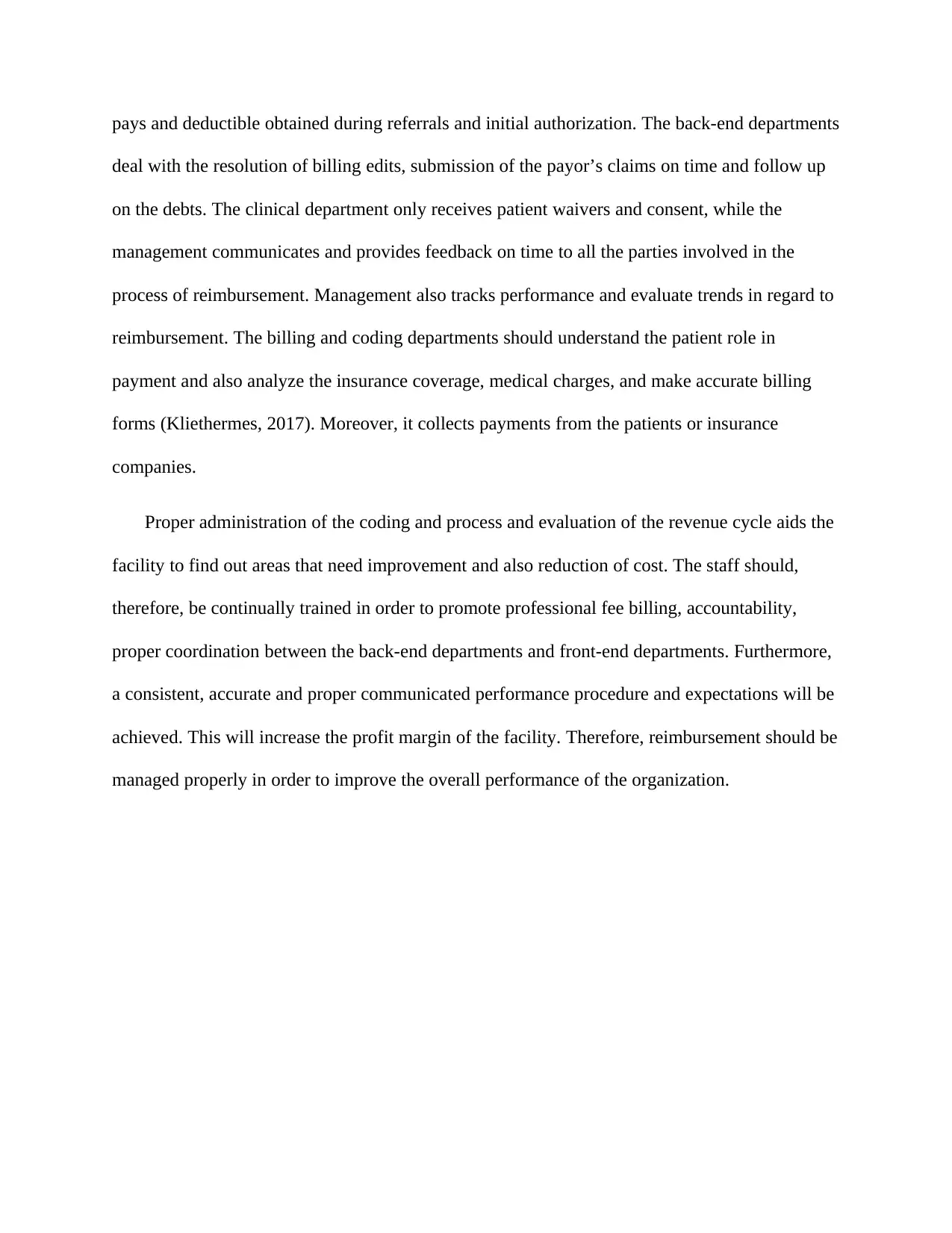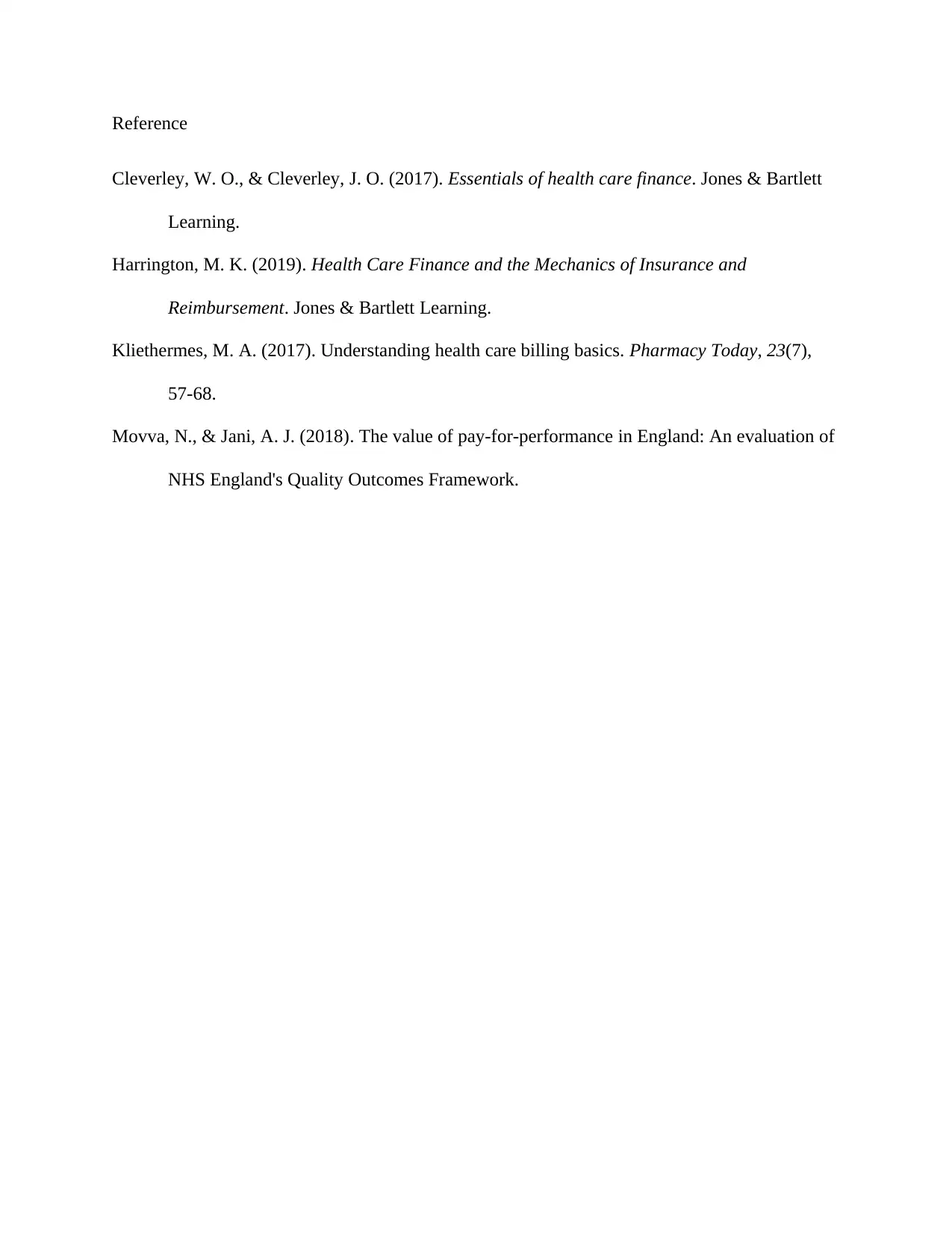Analysis of Healthcare Reimbursement Report and Strategies
VerifiedAdded on 2022/08/24
|4
|684
|15
Report
AI Summary
This report analyzes the healthcare reimbursement process, emphasizing its critical role in organizational financial health. It highlights the impact of effective reimbursement management on profitability, detailing how proper coding, such as the use of HCPCS/CPT codes and the resulting APC groups, is essential. The report also covers the significance of pay-for-performance strategies, including structural, outcome, and process measures, and their role in evaluating and improving care quality. Furthermore, it outlines the reimbursement process across departments, from front-end insurance verification to back-end billing edits, and emphasizes the importance of staff training and accurate performance procedures. By managing reimbursement effectively, healthcare organizations can improve their overall performance and financial margins. The report references key sources such as Cleverley & Cleverley (2017), Harrington (2019), Kliethermes (2017), and Movva & Jani (2018) to support its analysis.
1 out of 4










![[object Object]](/_next/static/media/star-bottom.7253800d.svg)